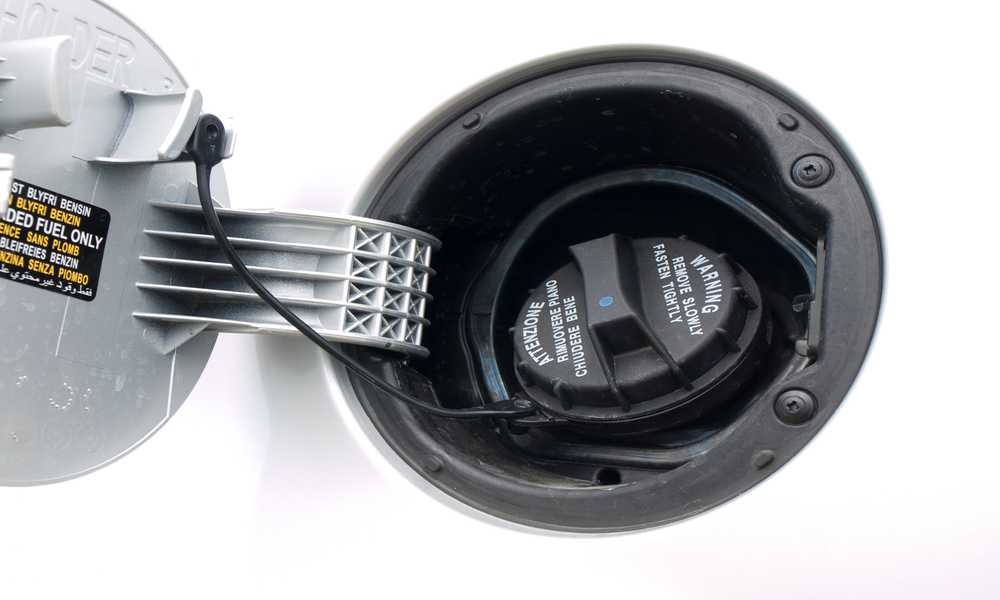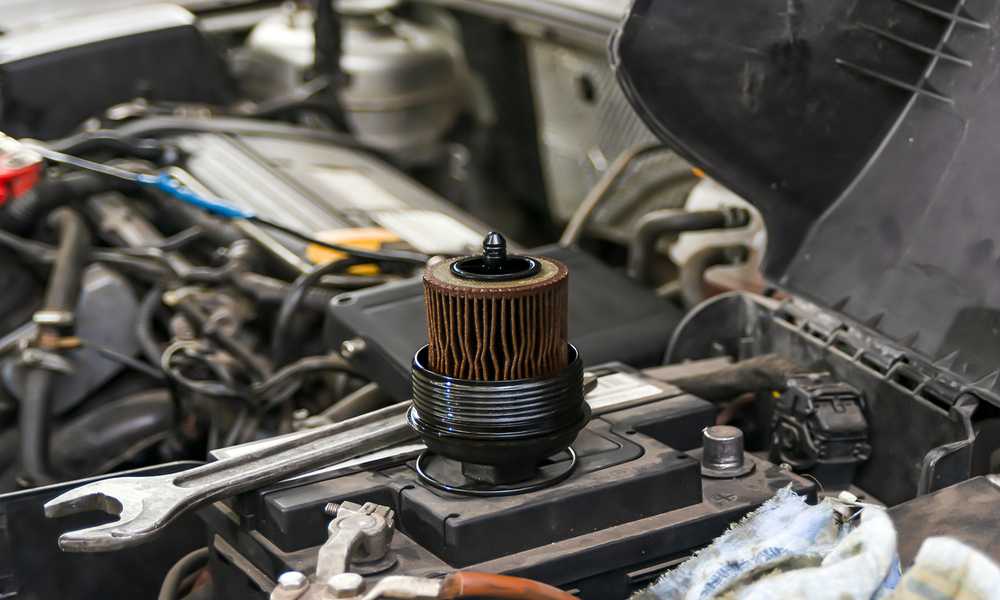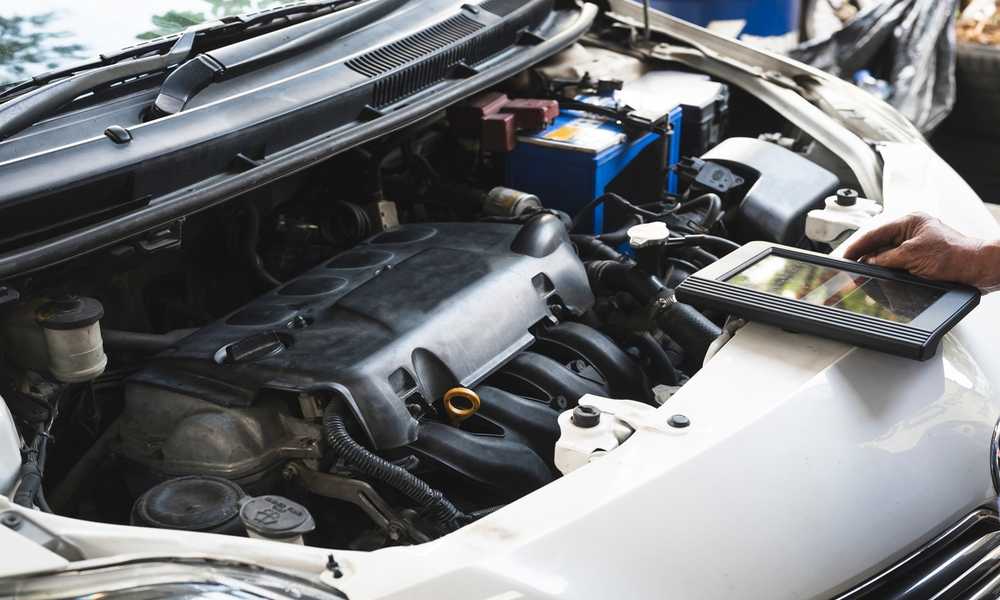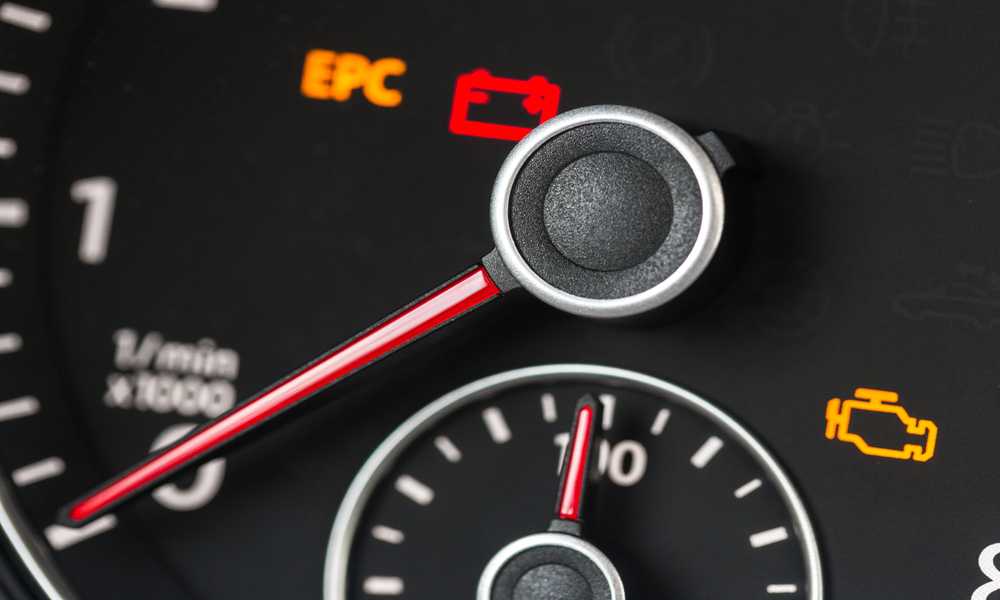Is the check engine light on your Ford stressing you out? Have no fear; you are not alone. A lot at Ford owners endured the panic of seeing the warning light come on in their dashboard. However, what does it signify? And more importantly, what are some cost-effective solutions? In this article, we’ll delve into the world of Ford check engine light and examine several frequent triggers for its activation. Get ready to learn the secrets that have been hiding in plain sight!
What does the Ford check engine light mean?
Ford’s check engine light is an attempt to provide information about probable mechanical failures. Whenever this indicator glows, it signifies an error has been identified by the on-board diagnostics system. But could you elaborate on its meaning?
However, the check engine light isn’t very helpful because it doesn’t specify what the issue is. Instead, see it as a sign that you should dig more into the matter. Any number of things, from a leaky gas cap to a faulty sensor, are possible causes.
Never dismiss the check engine light since it may indicate a more serious issue down the road. Some problems may be minor and simple to resolve, while others, if neglected, could escalate and become much more serious.
Don’t freak out just yet when that annoying indicator light turns on. Use this time to inspect your car and fix care of any problems you see now, before they become huge hassles later. Avoiding problems in the first place is the best course of action when it comes to auto repair.
Common causes of the Ford check engine light
Seeing the check engine light come on in your Ford might be very unsettling. But before you freak out and picture the worst-case scenario, you should learn the most typical reasons for this red flag.
Keep in mind that these are just some of the possible explanations for a Ford’s check engine light. There are a number of different possibilities that could have triggered this notice. A professional diagnosis should be sought out if the source cannot be determined. Hold tight!
1. Loose or faulty gas cap

Ford check engine lights are known to be triggered by a loose or malfunctioning gas cap. It might not seem like a big deal, but it could cause the engine warning light to come on.
To what end does this occur? Well, the gas cap is critical for keeping the fuel system pressurized. Failure to correctly tighten it or damage to the seal can cause evaporation to leak. Since they can’t be contained, fuel vapors are released into the atmosphere.
If your car’s check engine light comes on because of a malfunctioning gas cap, what should you do? The first step is straightforward: just make sure the gas cap is all the way on. Listen for the click as you give it a couple more twists.
Changing the gas cap may be necessary if tightening it doesn’t fix the problem. Compatible replacement caps are readily available at car parts retailers and even online.
Keep in mind that if you take care of this little problem quickly, you can avoid any further issues and any harm to your vehicle’s emissions system. Don’t ignore the warning, and make sure you check your gas cap.
2. Faulty oxygen sensor
Ford Check Engine Light issues are often caused by a malfunctioning oxygen sensor. An oxygen sensor’s vital function is to measure the percentage of oxygen in the engine’s exhaust. The engine management module can then use this data to fine-tune the air-fuel ratio for maximum efficiency.
When an oxygen sensor fails, it can cause a cascade of complications. The engine may not be getting reliable information about how much gasoline to feed into each cylinder, which could lead to a drop in fuel efficiency. Another possible problem is an increase in emissions due to incorrect combustion and more pollution being released into the air because of a faulty sensor.
When an oxygen sensor fails, replacing it is a simple task that typically does not necessitate a lot of time or money. However, you should fix this right away to avoid more damage and to keep your car in compliance with emission regulations.
If the Check Engine Light on your Ford is on because of a broken oxygen sensor, you should take it to a certified Ford repair. They will know how to find the source of the problem and fix it, as well as how to install the new sensor correctly. Keep in mind that ignoring a warning light for too long can lead to more serious issues down the road.
3. Bad mass airflow sensor
The mass airflow sensor (MAF) is a vital part of your Ford’s motor. The amount of air entering the engine is measured and relayed to the ECU for further processing. This information is useful for achieving the most effective possible ratio of air to fuel for combustion.
Possible causes of a faulty MAF sensor that triggers the “Check Engine” warning on your Ford. A tainted or obstructed sensor is a common cause of problems. Over time, the MAF sensor might become contaminated with dirt, debris, and oil, reducing its effectiveness.
A broken electrical connection is another probable explanation. When the signal between the MAF sensor and ECU is interrupted, as it can be by corrosion or faulty wiring, the check engine light illuminates.
Sometimes the MAF sensor is just broken and needs to be replaced. The effects of time and use on such a delicate part are not to be underestimated.
If your Ford’s mass airflow sensor is malfunctioning, try using a MAF cleaner to get rid of any debris that may be clogging its air intake. It may be necessary to replace the entire device if cleaning doesn’t fix the problem. If you’re not confident about your abilities, read the instructions or call a mechanic before proceeding.
4. Failed ignition coils

Ford check engine lights are often caused by malfunctioning ignition coils. The high voltage generated by the ignition coils is what ignites the fuel/air mixture in your engine’s cylinders. Misfires, decreased fuel economy, and the illumination of the “check engine” warning light are all possible outcomes of a failed ignition coil or coils.
Rough idling, stalling, or a lack of power could be signs of a problem with the ignition coils in your car. Driving with defective ignition coils can cause additional wear and tear on other parts of the engine, so it’s crucial to get this fixed as soon as possible.
When your ignition coils stop working properly, you’ll need to get them replaced by a pro. They will figure out which defective coil is at the root of the issue and replace it. Resolving the issue that prompted the check engine light to come on in the first place is only half the battle; keeping your Ford running at peak efficiency and performance is just as important.
In order to avoid problems like faulty ignition coils, it is essential to perform routine maintenance and inspections. Preventing having to pay for expensive repairs requires regular maintenance including tune-ups and the timely replacement of worn out components. Don’t disregard the warning from the engine light; have the faulty ignition coils fixed.
5. Problem with the EGR valve
Your Ford’s emissions and gas mileage can both benefit greatly from the installation of an Exhaust Gas Recirculation valve (EGR valve). Still, it’s prone to wear and tear much like the rest of your car’s parts.
A malfunctioning EGR valve is a typical cause of the “check engine” warning light. Recirculated exhaust gases are directed into the combustion chamber by this valve. It can cause problems including rough idling, less power, and increased emissions if it gets clogged or stuck open or closed.
When the engine warning light comes on because of an EGR valve issue, it must be fixed immediately. If you disregard this problem, you may end up with more expensive repairs or a damaged engine.
In some cases, cleaning or replacing the EGR valve itself is all that’s needed to get rid of the problem. It’s recommended that you seek the help of a professional technician so that the problem may be properly identified and fixed.
Your Ford’s EGR valve, like many other parts, will last longer if you service it regularly. You may extend the life of your car by properly maintaining it and attending to any problems as soon as they emerge in accordance with the manufacturer’s guidelines.
6. Defective catalytic converter
A faulty catalytic converter is a common cause of the Ford “check engine” warning light. This critical part serves the important function of lowering exhaust pollutants. However, if it is blocked or destroyed over time, its efficiency drops and its pollution output rises.
Low gas mileage, slower acceleration, and less overall power are all possible outcomes of a broken catalytic converter. An unpleasant smell, like sulfur or rotten eggs, may also be emanating from your vehicle’s tailpipe.
Diagnostic tools tailored to catalytic converter problems are frequently necessary for accurate diagnosis. A technician will run diagnostics to assess the converter’s efficiency and whether or not it should be replaced. Remember that the high cost of this component is a result of its complicated design and high-quality materials.
Avoid ignoring a catalytic converter problem that could be the cause of your Ford’s check engine light coming on. You may do more harm than good to your engine and other parts of the emission system if you kept driving with a faulty catalyst.
Seek the assistance of a qualified Ford-specific mechanic in order to resolve the issue at hand and restore vehicle performance to peak efficiency with minimal negative effects on the environment. Their expert diagnosis and recommendations for servicing or replacing your catalytic converter will ensure that you get the best performance possible from your vehicle.
7. Clogged fuel injectors

Ford Check Engine Light issues are often brought on by clogged fuel injectors. The injectors are responsible for introducing fuel into the engine’s combustion chamber at precisely the proper pressure and volume. When deposits accumulate inside the injectors, they might get clogged and reduce the efficiency of the system.
If your fuel injectors become blocked, your car’s performance may suffer. Rough idling, sluggish acceleration, lower fuel economy, and even stopping are all possible outcomes. It’s important to pay attention to these signs because they may signal a problem with your fuel system.
Multiple solutions exist for clearing up blocked fuel injectors. A fuel injector cleaner additive can be used to assist dissolve deposits and restore proper injector function. Fuel injector cleaning by a professional mechanic or repair shop is still another choice.
Fuel injectors are less likely to become clogged if they are regularly serviced and cleaned. You can help your engine operate smoothly by changing the oil frequently and using premium petrol.
If your Ford vehicle is experiencing problems and you think that blocked fuel injectors may be to blame for the check engine light turning on, it is recommended to have it checked by a qualified mechanic who has expertise working on Ford vehicles.
Don’t ignore your vehicle’s check engine light; doing so will lead to inefficient operation and potential damage or expensive repairs down the road if you don’t deal with the underlying cause.
How can I fix Ford check engine light?
The appearance of your Ford’s “check engine” light is cause for concern. Not to worry! Fixing the problem and getting that light to go out is within your reach.
To begin, know that your vehicle’s check engine light indicates a potential problem with one or more of your vehicle’s systems. Any number of things, from a faulty gas cap to engine or emissions system trouble, could be to blame.
The most typical reason for a check engine light to come on is a malfunctioning or loose gas cap, so that’s the first thing to check while troubleshooting. You might try driving around with the cap tightened to see if the indicator light goes off.
If that doesn’t fix it, you may need to utilize an OBD-II scanner to get and decipher error codes from your car’s on-board diagnostics system. These codes can help pinpoint the source of the problem.
Once you know which codes are at play, you can begin looking into potential fixes. This may necessitate the replacement of broken sensors or components, the clearing of clogged injectors, or the repair of damaged wiring.
Keep in mind that if you want to fix something, it might take some expert knowledge and equipment to do it. If you are unsure of your abilities in this area, it is recommended that you seek the help of a qualified mechanic.
Finally (oops! ), figuring out what’s triggering the Ford check engine light and resolving it requires reading and understanding the vehicle’s trouble codes. Tightening the gas cap and employing diagnostic tools are also good first steps toward fixing those annoying light warnings. Don’t wait until tomorrow to do what will give you peace of mind today.
Read Ford check engine light codes
Find out what’s triggering the check engine light in your Ford as soon as possible. One method involves deciphering the information included in the car’s on-board computer. Information regarding what could be triggering the check engine light can be gleaned from these codes.
You need an OBD-II scanner or code reader to get these numbers. You can either buy or rent these tools from a garage supply shop. Simply connect the scanner to the vehicle’s OBD-II port (often found beneath the dashboard) and use it in accordance with the manufacturer’s instructions.
Once linked, the scanner will exchange data with the car’s computer and show you a string of numbers and letters. Each number represents a different issue or part that must be fixed. These codes should be recorded exactly as they appear for future use.
Once you have the codes, you may look up their meanings online or in a Ford repair manual. While decoding these messages can help you figure out what’s wrong with your car, a more thorough diagnosis is still probably in order before you can get it running smoothly again.
Ford’s check engine light codes provide information that can help you determine the nature of any issues with your vehicle and the best way to fix them.
Is it safe to drive your Ford with the check engine light on?
Can you still drive your Ford with the warning light on? This is a question frequently posed by Ford drivers upon seeing the dashboard warning light come on. It’s tempting to ignore the check engine light and keep on driving, but doing so might have disastrous results.
Indicating a possible problem with your vehicle’s systems, the check engine light should never be ignored. If you disregard this caution, you may end up having to spend a lot of money fixing the harm that has already been done. Your vehicle’s performance, fuel economy, and emissions can all suffer if you keep driving with a broken part or system.
To add insult to injury, keeping on the road with a blinking “check engine” light can leave you stuck if your car suddenly gives out. Problems should be dealt with as quickly as possible rather than allowed to fester and grow worse.
A bright check engine light may not always indicate an imminent threat to the driver, but it is still important to fix the issue as soon as possible. Overheating or strange noises from beneath the hood are two examples of situations in which it’s recommended to pull over to the side of the road and call for help from roadside assistance or a professional.
Ignoring or putting off fixing the problem that your Ford’s check engine light is indicating could put your safety at risk and cost you money.
How much does it cost to get the engine light checked?

When the check engine light comes on in a Ford, the cost of getting it checked is a regular source of anxiety for the owner. It’s reasonable to be wary; nobody likes being blindsided with a huge bill for car maintenance.
The price of having your check engine light checked will change based on a number of variables. The location of the auto repair shop plays a role. It’s possible to find price discrepancies between franchised dealerships, independent technicians, and specialty garages. The severity of the problem that triggered the check engine light is another factor that may affect the final price.
While specific costs may vary, in general, you may expect to pay between $50 to $200 for a diagnostic test. This cost accounts for the time required by certified mechanics utilizing advanced tools to figure out what prompted your Ford’s “check engine” light.
Remember that this cost normally only covers diagnosis and does not include any necessary repairs or parts replacement that may be required once the problem has been identified. The actual cost of correcting the issue that triggered your check engine light may vary substantially depending on the specifics of the situation.
Consult a professional mechanic who is familiar with your vehicle’s make, model, year, and condition to get an accurate assessment of the work needed and an estimate of the associated costs.
Keep in mind that if your vehicle’s check engine light comes on, it’s vital that you get it fixed as soon as possible to keep it running smoothly and avoid any more damage.
Final thoughts
Dealing with the Ford check engine light can be a frustrating experience, but it’s important not to panic. Remember that the check engine light is designed to alert you to potential issues with your vehicle, and addressing them promptly can help prevent more significant problems down the line.
If your Ford check engine light comes on, don’t ignore it. Take some time to diagnose the issue using an OBD-II scanner or seek professional help if needed. Knowing the specific trouble code will provide valuable information about what needs attention.
While there are common causes for the check engine light in Fords, it’s essential to remember that each situation may be unique. Always consult your owner’s manual or reach out to a trusted mechanic for guidance.
Taking care of any necessary repairs promptly will not only ensure your vehicle runs smoothly but also help avoid costly damage in the future. Regular maintenance and staying proactive when it comes to addressing issues are key factors in keeping your Ford running at its best.
In conclusion (without actually saying “in conclusion”), keep an eye out for any changes in how your Ford is running and take note of any warning lights that appear on your dashboard—especially the dreaded check engine light. By being aware and taking action when needed, you can keep your Ford performing optimally for many miles ahead!



